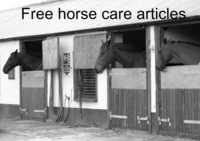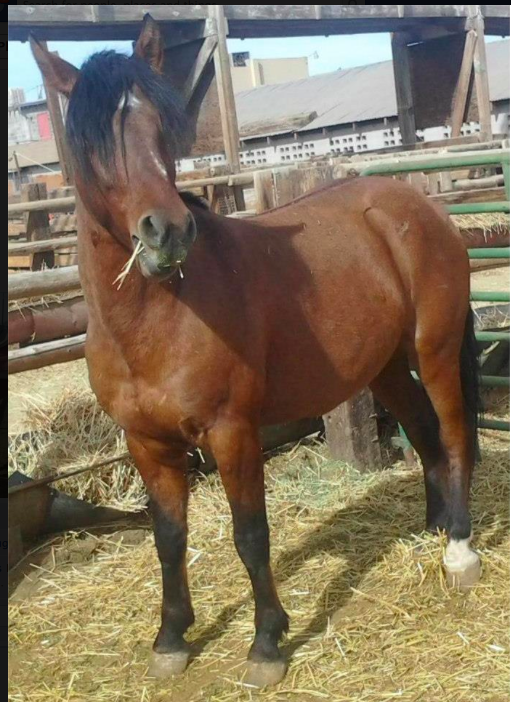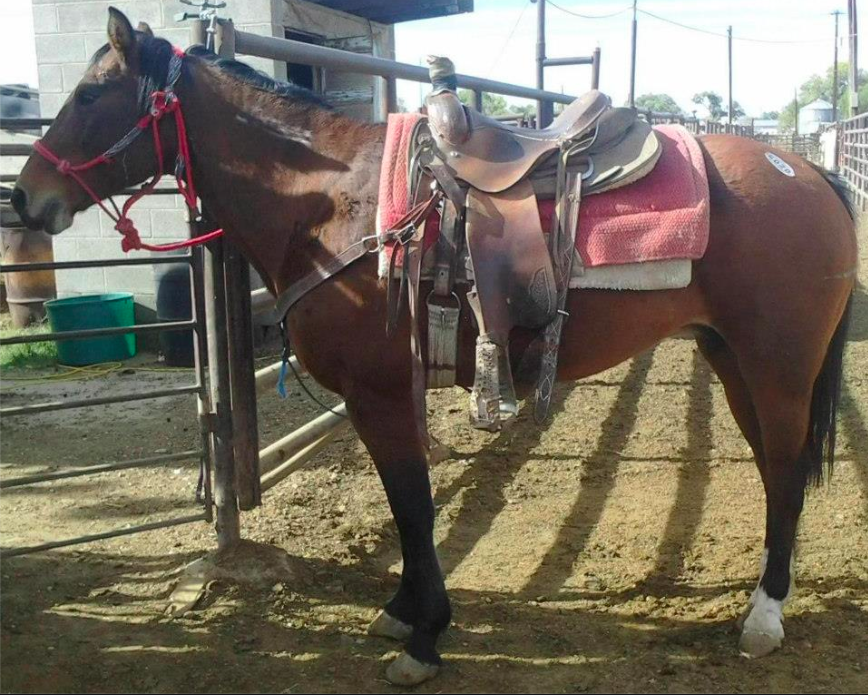
Equine Infectious Anaemia (EIA) is an exotic viral disease that
affects horses, mules and donkeys. It is spread via biting insects.
The disease is notifiable: if you suspect the disease, you must immediately notify the duty vet in your local Animal Health Veterinary Laboratories Agency (AHVLA) office.
Horses are most likely to become infected when travelling abroad to
areas or countries where the disease is endemic, or from the use of
biological products infected with the EIA virus. The disease is often
fatal to horses. In England infected animals are humanely destroyed to
control its spread.
Latest situation
18 October 2012 – Defra has confirmed a second case of Equine
Infectious Anaemia (EIA, sometimes referred to as swamp fever) has been
detected in a horse in Devon.
- The affected horse will be humanely destroyed. Movement
restrictions on the premises at which it was stabled, and other horses
at that premises, have been put in place and a veterinary inquiry into
the clinical history of the horse is underway.
- This follows a previous case of EIA confirmed on 3 October 2012.
Following this case, Defra conducted an investigation into the horse’s
movement history which showed that it came into contact with the second
horse now confirmed to have EIA.
- Through this investigation, Defra can confirm that these two cases
are linked to an incident of the disease confirmed in Devon in 2010. All
three of the horses that have so far tested positive in the south west
of England for the disease travelled into the UK together on the same
batch in April 2008.
- We are continuing to trace other horses imported on this batch in
2008 to ascertain whether any of these animals has the disease.
EIA is a notifiable disease and any owner or keeper who suspects a
horse might have EIA must contact their local AHVLA office. Horse owners
and vets should remain vigilant and report any suspicion of disease.
4 October 2012 - Customer Information Note: Equine infectious anaemia confirmed in Cornwall: Export trade
About the disease
Equine Infectious Anaemia (EIA) is a viral disease that affects
horses, mules and donkeys and is most commonly spread by biting insects
such as horse flies. There is no treatment and horses do not recover
from the disease, which can be fatal.
The Health Protection Agency has said EIA cannot be spread from animals to people and is not a risk to human health.
The disease does not spread quickly and is unlikely to spread widely
from infected horses as the flies that transmit the disease only travel
short distances to feed.
EIA is often fatal to horses. If the affected animal recovers it
remains a lifelong carrier of the disease and will thereby be infectious
to other animals, therefore all infected animals must be humanely
destroyed to control the spread of disease.
International disease monitoring
The disease does not commonly occur in Great Britain but it is
present in other parts of the world. Details of the latest situation can
be found at international disease monitoring.
7 September 2012 - Preliminary outbreak assessment: Equine Infectious Anaemia in Western Europe (PDF)
24 June 2011 - Qualitative
assessment of the risk of introduction of Equine Infectious Anaemia
(EIA) into Great Britain from an EIA endemic area through temporary
movement of UK origin horses (PDF 350KB)
Previous cases
30 March 2011 – Following the two cases of Equine Infections Anaemia
in September 2010, Defra published the reports of the epidemiological
investigations in Northumberland (PDF) and Devon (PDF), and a lessons learned report.
Spread/transmission
The most important way that this virus is transmitted normally is
through large biting flies such as horseflies (tabanid species) or
stable flies (Stomoxys calcitrans).
Transmission of the disease may occur where there are adult flies of
this type in proximity to infected horses. The adult flies are only
active between May and September, with activity peaking in July-August.
The flies overwinter as larvae and the larvae cannot transmit the
disease.
In addition, the flies normally travel no more than 200m to feed and
are not likely to be moved long distances by wind; therefore we would
not expect infected flies to spread far from the point of an infected
horse.
EIA is not spread by small flying insects such as midges and mosquitoes under normal conditions.
It is possible for disease to be transmitted by equipment that is
contaminated, especially if this contamination is with blood, milk or
maternal/placental fluid. Relevant equipment could include veterinary
instruments e.g. needles and scalpels, dental, obstetric grooming,
tattooing, farriery and tack such as bridles. However, it is important
to note that good hygiene practices will reduce the risk of transmission
by these routes to negligible.
It may also be spread by saliva, nasal secretions, faeces, semen,
ova, and embryos. However, the risk from these routes is low and can be
mitigated by good hygiene measures.
Pregnant mares may pass the disease to their foals in the womb.
How to spot the disease
Animals may be affected acutely, chronically, or sub-clinically. The
incubation period is variable, from a matter of days to a few months,
but is generally one to three weeks.
The disease is characterised by a recurring fever, anaemia, oedema
(fluid retention), emaciation and death. However, many horses have very
mild or unapparent signs on first exposure. Owners of such animals are
unlikely to realise that they are infected unless serological testing is
carried out. All infected horses, including those that are
asymptomatic, become carriers and are infectious for life.
Although they may never recover from the acute stage of infection the
chronic phase of the disease may lead to ill-thrift and impact on
infected equines for the rest of their lives, predisposing them to
secondary infections and worm burdens.
Diseases that can appear similar to EIA include:
- Notifiable diseases: African Horse Sickness, Anthrax, Dourine, Equine Viral Arteritis, Japanese Encephalitis
- Systemic diseases: Equine Influenza, Equine Herpes Virus, Babesiosis, Ehrlichiosis, Leptospirosis, Fascioliasis, systemic infection or abscess
Affected horses
If an animal does test positive for EIA, the only course of action is
to humanely put it down. This may be for the welfare of the affected
horse, but also to protect other horses from infection. We have agreed
with equine industry veterinary surgeons that destruction is the only
policy. Legislation was introduced in August 2006 to provide powers to
slaughter horses affected with EIA. We would only invoke our powers to
destroy the horse if an owner refused to co-operate. If the powers to
slaughter need to be invoked, AHVLA will facilitate safe carcass removal
and destruction.
We will only cull animals that have tested positive with the
appropriate blood test. With this disease, we are not culling animals on
suspicion. In addition, each animal that has been traced as a contact
with infected animals will be kept under restrictions and tested until
we are satisfied that it is not affected by the disease. Restrictions
will be lifted when a veterinary risk assessment advises that the risk
is low.
Disease prevention
If an EIA outbreak were to occur in the UK, preventing your horse
being bitten by horseflies, and practising good basic biosecurity, would
currently be the best protection available. No vaccine is available for
routine use.
Preventing your horse from being bitten by horse flies is difficult
and there is no mechanism of protection that will guarantee your horse
will not be bitten at all. The information below outlines protective
measures that can be taken to decrease the risk of attack by these
flies.
Decreasing the risk of attack
No veterinary medicines are currently authorised to act specifically
against horseflies, but there are products licensed for use on horses as
insecticides and as insect repellents. It is important that you seek
advice from your Vet and read the instructions for these products
carefully and use them as directed.
Legislation covering slaughter of equines affected by EIA
On 6 November 2006 the Equine Infectious Anaemia (Compensation) (England) Order 2006 came into force.
On 29 August 2006 the Specified Diseases (Notification and Slaughter) Order 2006 came
into force and amends the Specified Diseases (Notification and
Slaughter) Order 1992 by adding EIA to the list of diseases under the
Animal Health Act 1981 which may be slaughtered.
Government action to reduce the risk of EIA entering the UK
On 3 May 2007, Council Decision 2007/269/EC
(PDF KB) on protective measure with regard to equine infectious anaemia
in Romania came into force. It requires equidae, or ova and embryos of
equidae originating from Romania to be subject to a Coggins test prior
to export.
On 14 September 2006, Defra published a qualitative risk assessment
on equine infectious anaemia which was copied to the EU Commission for
consideration.
Under the scope of the Tripartite Agreement Defra keeps regular
communications with the Irish Agricultural Department to monitor closely
the EIA situation in Ireland. Following the EIA outbreak in Ireland in
2006, any horse moved from Ireland into the UK, which may have presented
a high risk, was traced back to the premises of destination and put
under restriction until negative tests eliminated the risk.
On 26 June 1990 the animal health conditions governing the
intra-Community trade and import from third countries of equidae were
harmonised through the whole of the EU by the implementation of
Directive 90/426/EEC. There is limited scope for the UK Government to
adopt unilateral measures in relation to EIA.
On 20 May 1987 the Infectious Diseases of Horses Order, which revoked
and replaced earlier legislation, made EIA compulsorily notifiable. It
gave an inspector powers to declare an infected place where disease is
suspected; to carry out a veterinary inquiry, prohibit the movement of
horses carcasses and other things onto or off the premises and requires
cleansing and disinfection.
via Defra
Links








